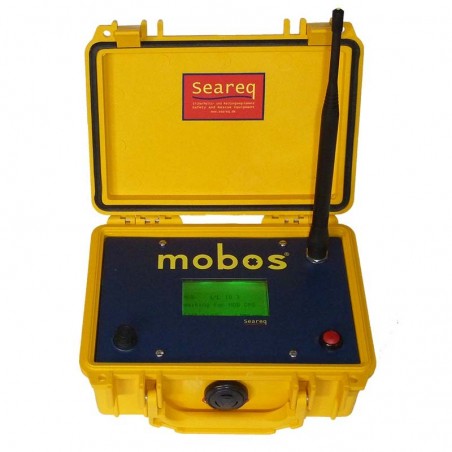







A solution to instantly locate a crew member overboard and guide the crew towards a rapid rescue




The MOBOS receiver is the core of the SEAREQ MOBOS safety system. Designed for crews and navigation, it instantly captures the signals emitted by MOBOS® beacons and displays the exact distance and direction of the person overboard.
Fully autonomous — without relying on external services (MRCC – Maritime Rescue Coordination Centre or commercial satellites) — it enables rapid intervention, even during offshore sailing or in remote areas. Its robustness and reliability make it a preferred choice for yachts, racing crews, professional navigation and safety vessels. It provides crews with the confidence and peace of mind of a solution always ready to protect lives at sea.
Depending on the type of life jacket that you use, the MOBOS® beacon is available with either a manual or automatic activation device.
The beacon can be easily attached to an automatic lifejacket (even with a lifejacket to SOLAS standards, narrow waist) without hindering the movement of the skipper.
The beacon MOBOS® will automatically activate the trigger of the lifejacket (self inflating).
The tag can also be carried in his pocket, itself attached to a lifejacket.
The MOBOS® beacon is powered by standard batteries, which can be easily replaced by the user.
The MOBOS® tag has a robust construction: the antenna is protected by this design, the housing has been carefully designed to be shock resistant and without sharp edges.
Mobos The receiver is available in a box to suitcase size, it is waterproof, comfortable and convenient.
On request, the mobos receiver is available in a format to be integrated into a dashboard.
Regardless of the model chosen, the receiver's display screen, mobos always give accurate information about the position of man in the sea. The information is concise, simple and understandable even under stress!
Operation mobos system:
1. mobos receiver on the boat determines its position using GPS satellites. Thus the receiver is ready to receive distress signals from mobos distress beacon.
2. activation of an EPIRB mobos, a flash light signal is triggered and directly transmits the alert mobos receiver. The crew is instantly informed of the emergency. The mobos EPIRB begins to determine its own location using GPS satellites.
3. Once the GPS position of the specified tag mobos, the coordinates are automatically transmitted by radio frequency (UHF) receiver at mobos
immediate rescue without looking!
The accurate information provided by the receiver mobos enable rapid rescue without human research to the sea. The skipper receives clear information about the position of the victim.
multiple alerts simultaneously!
If more people fall into the sea and each mobos tag transmits a warning signal simultaneously, the mobos receiver is able to receive, evaluate and view all alerts simultaneously.
In this case, the receiver shows on its mobos
screen all relevant data concerning the distance, bearing and GPS position of each member of the crew adrift.
Continuous updating of mobos tags!
The mobos tag relays all its GPS location
15 seconds. So the crew is updated permanently
as regards the position (s) of person (s) who is in distress man in the sea.
Data sheet
| Feature | Specification |
|---|---|
| Type of use | Nautical |
| Warranty | 2 years |